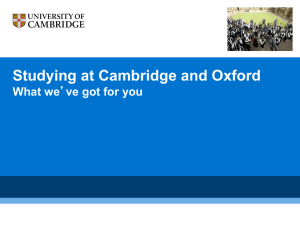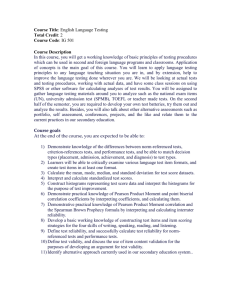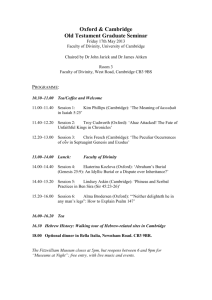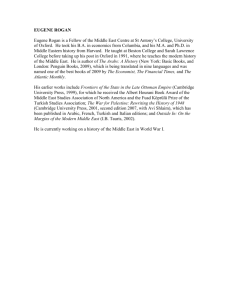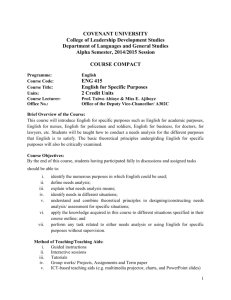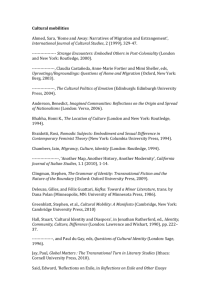Gender and Higher Education
advertisement
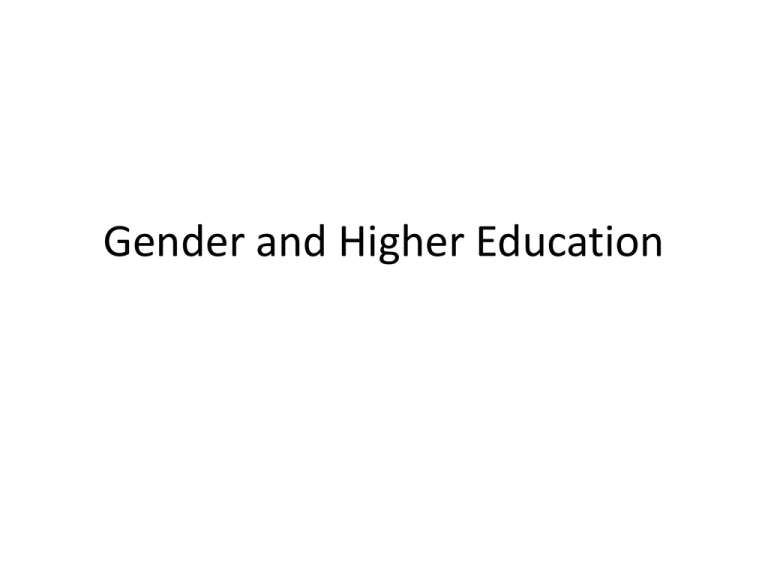
Gender and Higher Education Overview • • • • • Universities and change Middle-class education Pioneers: Miss Buss and Miss Beale Women and universities Pioneers: Emily Davies and Elizabeth Wordsworth • Conclusion Early universities • Most vibrant and inclusive universities were in Scotland. There were four (Edinburgh, Glasgow, St Andrew's and Aberdeen) in contrast with only two for England (Oxford and Cambridge). • In 1825-6 the total Scottish student population was estimated at about 4,500. There was an exceedingly diverse student body. • In contrast, Oxford and Cambridge were intellectually moribund and student numbers were low. • By 1820-9 annual admissions to Oxford colleges averaged 400 and to Cambridge colleges, 440 giving a total student population only half that in Scotland. • Students taught either classics or mathematics and drawn exclusively from the gentry and aristocracy. London University • In 1828 'the godless institution of Gower Steet', which was to become University College, London, opened its doors. • In 1831 King's College in the Strand established. • In 1832 another Anglican University was established at Durham. • In 1836 the Whig government created by charter a University of London simply an examining and degree-giving body, under whose umbrella University College and King's College - and any number of institutions and individuals - could gather. • Already by 1850 the number of candidates successfully meeting its matriculation requirements was just short of 200 a year. • The Whigs and radicals who established the University of London accepted the need to challenge the social and denominational narrowness of Oxbridge. Oxbridge reform • • • • • • Admissions to Oxford and Cambridge began to increase from the 1870s. In 1901 the male student populations of Oxford and Cambridge were 2,537 and 2,880. 1870s saw the arrival at Oxford and Cambridge both of dissenters and of women. Abolition of University Tests in 1871 opened undergraduate places and fellowships to all religious denominations. Emily Davies's College was founded at Hitchin in 1869 and moved to Girton, near Cambridge, in 1873. Henry Sidgwick and Anne Jemima Clough opened the residence which became Newnham College, in 1871. In Oxford, 1879 brought the foundation of Somerville, Lady Margaret Hall and the Society for Home Students, which eventually became St Anne's; followed in 1886 by St Hugh's and in 1892 by St Hilda's. In 1900-1, there were 296 women students at Cambridge and 239 at Oxford. Women did not become full members of the university in Oxford until 1919 and in Cambridge until 1948. Formal curriculum also changed with the creation of the Natural and Moral Sciences Triposes in Cambridge and of undergraduate courses in History andLaw in both universities. Formation of new universities • • • • • • • • • • • • • 1851 Owen's College, Manchester 1871 Newcastle 1872 University College of Wales, Aberystwyth 1874 Leeds 1874 Mason College, Birmingham 1876 Bristol 1879 Firth College, Sheffield Full-time students (outside Oxford 1881 Liverpool and Cambridge) 1881 Nottingham England = 7,943 1883 Cardiff Wales = 1,253 1883 Bangor Scotland = 5,151 1892 Reading Total = 14,347 1902 Southampton 2,749 were women. Social Composition of Oxford students (male) 40 35 30 25 1818-19 20 1848-9 15 1897-8 10 5 0 Landowners Clergy Professions Business Father’s occupation Tradesmen Unknown Social Composition of Oxford students (female) 1881-1913 19 5 13 3 Landowners Clergy 22 Professions 38 Business Tradesmen Unknown Middle class education (boys) • Rise of English public school shifted education for middle and upper class boys in the middle of the century. • Public schools had been few in number and catered primarily for the sons of the landed elite. • By the 1860s attendance at a public school was essential for the sons of the professional and business classes. • Over 30 new public schools had been added to the original 7 to provide for this increased demand. • Thomas Arnold’s development of a reformed model of a public school at Rugby in the 1830s received widespread publicity. • New schools were more academic and orderly than their predecessors. Focused on ‘moral manliness’, physical toughness and endurance Middle class education (girls) • Creation of proprietary schools for girls. • Pioneer establishments had been the North London Collegiate School and Cheltenham Ladies' College in the 1850s. • 1872 a Girls' Public Day School Company was formed and already by 1880 it had opened eleven schools in the London area and eleven elsewhere. • A few new girls' schools, such as Cheltenham, Wycombe Abbey, St Leonard's and Roedean, were boarding, modelling themselves more or less on boys' public schools; but the vast majority were day schools. Pioneer – Frances Buss • • • • • • • Educated at a private day school Established own private school with her mother in Kentish Town, in 1845 Attended Queen's College in Harley Street, London 1850 school renamed the North London Collegiate School for Ladies Viewed competitive external examinations as the best preparation Many pupils went on to study at the women's colleges founded at Cambridge; twelve were at Girton in 1879 Clara Collet became the first former North London Collegiate pupil to obtain a degree when she took a London BA in 1880 Pioneer – Dorothea Beale • Sporadically educated in schools in England and France • Taught herself Greek and mathematics. • 1858 elected principal of Cheltenham Ladies' College • Were external examinations annually and strict discipline in the classroom • By 1880 Cheltenham Ladies' College was teaching a full syllabus including mathematics and classics. Women in universities • University of London in 1878 was the first university to admit women and University College London laid claim to be the first institution to run co-educational lessons. • Women had attended classes prior to this date. Some institutions eg St Andrews University had offered a higher certificate the LA, later LLA, Lady Literate in Arts to women students from 1876. • Apart from Oxford and Cambridge, Durham was the last university in England to admit women to its degrees. • In Scotland legislation between 1889 and 1892 empowered the four Scottish universities to admit women to classes and gain degrees. • The charter of the university of Wales, granted in 1893 stipulated women’s eligibility for degrees and also offices, stating specifically that they should be treated as full members off the university. • Women were almost universally excluded from studying medicine Women Graduates • In Glasgow, 4 medical students received degrees from Queen Margaret College in 1894 and 2 received arts degrees in 1895. • In Aberdeen 4 women students obtained a BA in 1898. • 4 women obtained degrees from the University of London in 1880 and 4 from Manchester in 1887. • From around 1900 the number of female students rose steadily, especially in arts departments. • Women represented 16% of students in 1900; 24% in 1920 and 27% in 1930. Pioneer – Emily Davies • Emily and her elder sister Jane were denied any serious schooling either at home or outside it • Linked to influential feminists: the Langham Place group in London. • Was secretary to the committee to secure the admission of women to university examinations. • 1866 published The Higher Education of Women • 1868 rented a villa at Hitchin, Hertfordshire, and the first five students taught by Cambridge dons came into residence there in October 1869. Thus began Girton College, Emily Davies's most enduring memorial. Pioneer – Elizabeth Wordsworth • Educated by governesses • Became principal of Lady Margaret Hall • Established St Hughes • Member of anti-suffrage campaign Conclusion • For middle class girls and women the 19th century was a century of progress in education. • Institutional focus in the new breed of private girls’ schools and the new women’s colleges. • Where the two sexes were segregated then, women were able to sustain educational advances, however this retarded the progress and the standards of education of coeducational institutions. • Public schools reinvigorated education of middle-class boys and instituted new culture of muscular Christianity and ‘moral’ manliness. • Education reform linked with rise of feminism but not invariably so.

